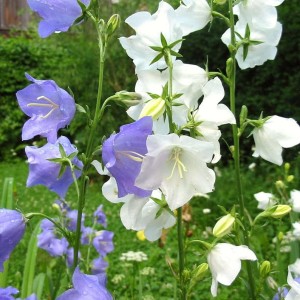 GPS is a wonderful thing. Gone are the days when drivers had to pull over, fumble with maps and try to figure whether or not that unmarked road was the shortest route to the desired destination. My husband, who felt that asking for directions was a violation of all that is masculine, would get especially flustered by wrong turns. I have vivid memories of a certain trip to Delaware when he was so upset that he started tearing up pages of a MapQuest printout and flinging them into the back seat of the car. This behavior was especially unusual for a man who could easily spend ten minutes watching a bumblebee on a coneflower.
GPS is a wonderful thing. Gone are the days when drivers had to pull over, fumble with maps and try to figure whether or not that unmarked road was the shortest route to the desired destination. My husband, who felt that asking for directions was a violation of all that is masculine, would get especially flustered by wrong turns. I have vivid memories of a certain trip to Delaware when he was so upset that he started tearing up pages of a MapQuest printout and flinging them into the back seat of the car. This behavior was especially unusual for a man who could easily spend ten minutes watching a bumblebee on a coneflower.
Now all of that is a thing of the past. GPS generally gets us where we want to go by the shortest route. However, human error still has a way of working itself into the traveling picture. Sometimes I make the second right when the GPS has indicated the first right. Sometimes I can’t get into the left lane fast enough and miss an important exit. Occasionally I have to bite the bullet and “make a U-turn, if possible.”
I was in one of those situations when I accidentally found the village of Homer, New York. And in Homer, New York, I discovered the most beautiful garden I have seen in a long time.
Incorporated in 1835, Homer features a quaint downtown and a sizeable number of Victorian era houses. The garden in question was on a corner lot surrounding one of those singular dwellings.
The house itself was a classic “painted lady” with its array fancy shingles and whimsical details picked out in contrasting paint colors. It was topped by an elegant weather vane that had clearly been made specifically for the house. The freestanding mailbox was cradled in an ornamental network of soldered metal pieces fabricated and painted to resemble a trumpet vine in flower.
All of that was beautiful on its own, but the garden, which was in full bloom over the Fourth of July weekend, was a revelation.
As my daughter and I stood on the sidewalk, gawking at the flowers, an elderly man emerged from around a corner of the house, angled his head towards the garden and said, “Come on in. I don’t mind sharing.”
“Are you the gardener?” I asked. “Indentured servant,” he said with a smile, before disappearing again.
The delphiniums, tall and handsome in brilliant blue, were the first plants I noticed. I have trouble growing them in my garden because they don’t like the hot, sticky summers. Clearly the more favorable climate and the gardener’s ministrations made all the difference.
The garden took up all the real estate on the side and back of the house, replacing what might once have been a lawn. Brick paths delineated the various areas, and I had the distinct feeling that the “indentured servant” had laid them. Instead of mulch, woolly “mother of thyme” plants carpeted the earth at the feet of the taller plants, with tiny pink blossoms shining like stars amid the green-gray leaves.
Clearly intent on filling every space with blooms, the Homer gardener had planted climbers throughout the beds. I have long coveted small-flowered clematis, but never managed to plant one n my home garden. I was inspired by the purple blooms of one specimen that reminded me of little upside down hats with curled brims. As I recall, it was growing up a small tree or large shrub. I have a standard weigela that is ripe for the same treatment.
Of course the garden had greenery of all sorts, but it was clearly a symphony of flowers. I had the feeling that the elderly man was a romantic with an intensely creative bent, engaged in a permanent love affair with blooming plants. If I were a betting person, I would wager that the garden is in full bloom for most of the growing season, and that the gardener works in it every day from morning to evening.
I love the great estate gardens, like Longwood, and I find endless inspiration in intensely creative spaces, like Chanticleer. But the garden in Homer, which is clearly the private paradise of one man, is a triumph of beauty and self-expression that will stay with me.
It makes me think that I should ignore the GPS more often.
